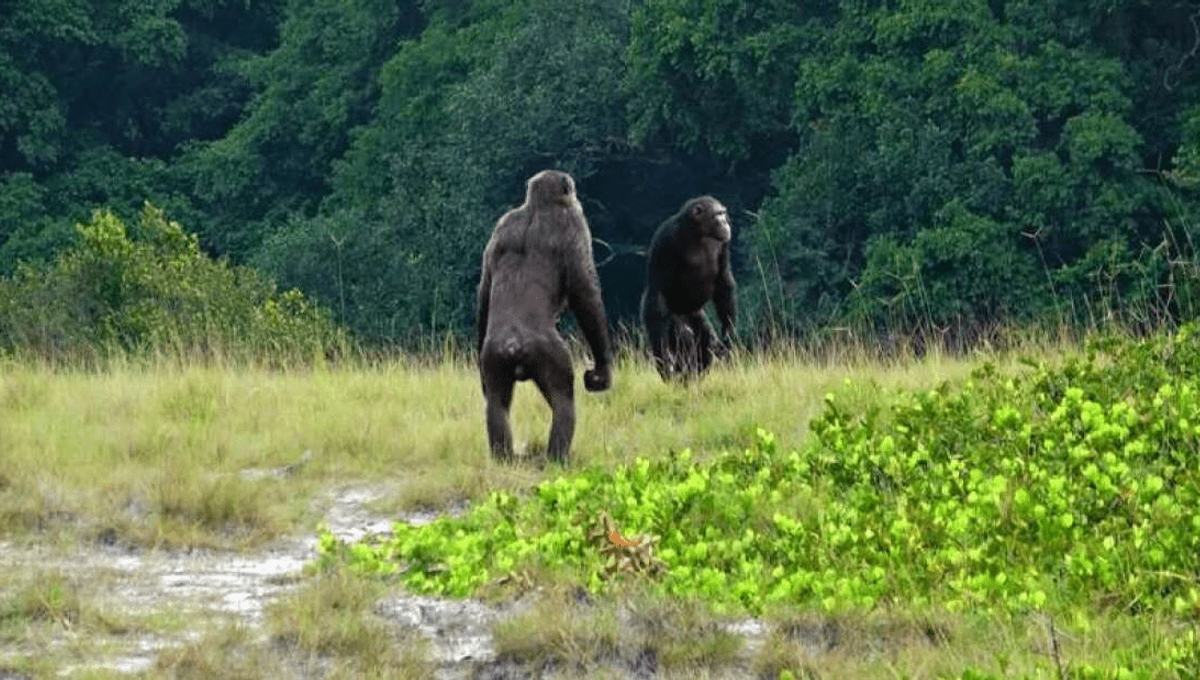Prepare to be amazed by the first-ever documented lethal attacks by chimpanzees against gorillas. These shocking findings, reported in Scientific Reports, reveal that our closest relatives can be just as dangerous as they are fascinating. But here’s the twist: the ultimate cause of these attacks may actually be us.
Welcome to Loango National Park in Gabon, where both chimpanzees and western lowland gorillas call home. For 16 years, the Loango Chimpanzee Project has been studying the intricate relationships within and between chimp troops in this remarkable park.
Chimpanzees are known for their warlike behavior, making them the most formidable of the great apes (excluding humans, of course). However, until recently, their aggression was primarily directed towards their own kind or smaller animals. Similar observations have been made in other locations as well.
“Interactions between chimpanzees and gorillas have always been considered relatively peaceful,” explains Professor Simone Pika of Osnabrück University. “We have witnessed both species coexisting peacefully in foraging trees, and our colleagues in Congo even observed playful interactions between these two great ape species.”
But everything changed two years ago when Lara Southern, a PhD student from Osnabrück, and her colleagues stumbled upon a terrifying encounter between chimpanzees and a group of gorillas. The battle that ensued lasted a staggering 52 minutes. And this was not an isolated incident – another conflict occurred 10 months later. In both cases, the chimpanzees, despite being outnumbered, used their cunning tactics to overcome the gorillas’ size advantage. Tragically, an infant gorilla lost its life in the first battle, while three chimpanzees sustained injuries.

Adult male chimpanzee in Loango National Park in Gabon. The park’s gorillas are less studied, and less photographed. Image Credit: © LCP, Tobias Deschner
Interestingly, West Africa’s chimpanzees have been considered less violent towards their own kind compared to their East African counterparts. However, recent research conducted by Southern’s team in Loango revealed that the park’s annual intercommunity killing rate is among the highest across all sites.
So, why did these attacks occur, and why now? The authors of the study suspect that the decrease in fruit production in Gabon’s forests, caused by climate change, may have triggered the violence. While the second baby gorilla was consumed by a chimpanzee, the first was not initially treated as food. This suggests that the attacks were driven more by competition for resources rather than direct predation.
“We are only scratching the surface of understanding the effects of competition on interactions between these two great ape species in Loango,” says Pika. “Our study highlights the vast amount of knowledge still waiting to be uncovered about our closest living relatives. And with its unique mosaic habitat, Loango National Park provides an exceptional setting for further exploration.”
Watch this fascinating video to learn more about the incredible world of chimpanzees and gorillas:








